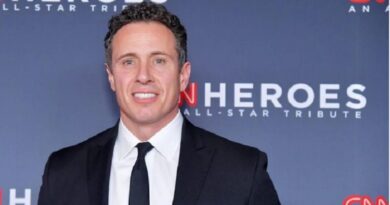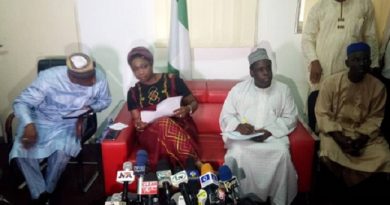Arms, How The Khashoggi Family Helped Mold The U.S.-Saudi Relationship
In the mid-1980s, Jill Dodd was a 20-year-old model working in Paris when she got an unexpected offer from her agent: She was invited to a gala pirate-themed party on the beach in Monte Carlo being thrown by the billionaire Saudi arms dealer Adnan Khashoggi.
Dodd had no idea who Khashoggi was or why she was invited. But, she says, being “naive and gullible,” she jumped at the chance and soon found herself on the beach dancing with the short, pudgy Saudi mogul. He ended up writing “I love you” in blood on her arm, she says.
It was the start of a wild 18-month relationship during which Dodd agreed to serve as Khashoggi’s “pleasure wife.” She partied it up on his legendary yacht, the Nabila, and flew around the world on his private jet, having sex, doing cocaine, sitting by his side at high-stakes gambling binges in Las Vegas.
Today, Dodd — having gone on to have a successful career in the fashion business — looks back on her time globe-trotting with Khashoggi with no small degree of horror. “I really realized I was part of a harem,” she says. “It took a long time to come to the realization and be able to accept the fact that I had been sold without my knowledge. So I was sold like a prostitute would be sold.”
The flamboyant life and checkered legacy of Adnan Khashoggi are the subject of Episode 2 in the new season of the Yahoo News podcast “Conspiracyland: The Secret Lives and Brutal Death of Jamal Khashoggi.”
Adnan Khashoggi, who died in 2017, was Jamal Khashoggi’s cousin; their grandfathers were brothers in the holy city of Medina. Jamal Khashoggi knew his older cousin from family gatherings over the years and showed up for his burial in Medina four years ago, even while expressing nothing but disdain for his grotesque sybaritic lifestyle.
And yet, as “Conspiracyland” shows, Adnan Khashoggi played a crucial role in the evolution of the U.S.-Saudi alliance. Over the course of two decades, between the late 1960s and the mid-1980s, he brokered billions of dollars in arms sales from U.S. defense contractors to the Saudi military — deals that became the heart of a core arms-for-oil bargain that has sustained Washington’s relationship with Riyadh ever since.
Adnan Khashoggi “pioneered this relationship between the U.S. and Saudi Arabia,” says Ron Kessler, a former investigative reporter for the Washington Post, who wrote a biography of the arms dealer called “The World’s Richest Man.”
“Khashoggi was the emissary of the king,” Kessler says in “Conspiracyland.” “And so he would kick back some of the commissions from the American companies directly to the king, as well as to the Saudi defense minister and princes. And everyone was happy. The king was happy, he got his money, Khashoggi got his cut. … The spectacular wealth, the display, the parties, all attracted business. And it was like bees around honey. It was really an incredible episode in history.”
The fear of disrupting that arms-for-oil money flow was ultimately a major factor in persuading the Trump White House not to impose any price on the Saudis for the gruesome murder of Adnan’s cousin Jamal, who at the time of his death was a columnist for the Global Opinions section of the Washington Post.
Trump himself made that painfully clear when he cited giant Saudi arms purchases as his chief reason for not imposing any sanctions on Saudi Crown Prince Mohammed bin Salman even after the CIA concluded he had authorized the operation that killed the journalist inside the Saudi Consulate in Istanbul on Oct. 2, 2018.
“If we abandon Saudi Arabia, it will be a terrible mistake,” Trump said at the time. “They’re buying hundreds of billions of dollars’ worth of things from this country. If I say ‘We don’t want to take your business,’ if I say ‘We’re going to cut it off,’ they will get their equipment, military equipment, from Russia and China. I’m not going to tell a country spending hundreds of billions of dollars — and helping me out do one thing very importantly, keep oil prices down so they’re not going to 100, 150 dollars a barrel — I’m not going to destroy the economy for our country by being foolish with Saudi Arabia.”
As with much else with Trump, such positions were taken against the backdrop of business deals between him and various Saudi moguls that began with Adnan Khashoggi. In 1991, Trump — envious of the Saudi mogul’s lifestyle — arranged to buy his yacht, the Nabila, for $29 million, touting it on the David Letterman show as “probably the greatest yacht ever built. It’s really been kind of a great investment.” (Trump renamed it the Princess, apparently after his daughter Ivanka.)
But not that great an investment. Three years later, when Trump was facing bankruptcy over his floundering Atlantic City casinos, he was bailed out by yet another Saudi mogul — Prince Alwaleed bin Talal — who bought the yacht from him for $20 million. Although he may have taken a bath on the boat, the sale was the start of a gushing Saudi spigot to the Trump Organization that continued for years.
Wealthy Saudis pumped millions into his company coffers, buying up apartments in Trump buildings, at least as much as, if not more than, Russian oligarchs did. In 2001, three months before the 9/11 attacks, in which 15 of the 19 hijackers were Saudi nationals, the Saudi government plunked down $4.5 million to purchase the entire 45th floor of Trump Tower in Manhattan, eventually turning it into the offices of the country’s United Nations mission.
“Saudi Arabia, and I get along great with all of them, they buy apartments from me, they spend $40 million, $50 million,” Trump declared at a 2015 campaign rally in Mobile, Ala. “They spend so much money. Am I going to dislike them? I love them.”
It was an affection that continued right into his presidency, when Trump made placating the Saudis a centerpiece of his Middle East strategy — and ultimately persuaded him to impose no price on the country’s leaders for the state-sponsored assassination of Adnan Khashoggi’s cousin Jamal.
Next on “Conspiracyland”: Episode 3, “Jamal and Osama”
Adnan’s younger cousin Jamal pursues a very different path that leads him to the caves of Afghanistan, where, as a young reporter for the Arab News, he champions the fight against the Soviet occupation being waged by a fellow Muslim Brother who was then his good friend: Osama bin Laden. It is the start of a long and complicated relationship between Khashoggi and bin Laden that years later leads to a fateful series of meetings in Khartoum, Sudan, in which the Saudi journalist is recruited to try and persuade the terrorist leader to return to the kingdom.




